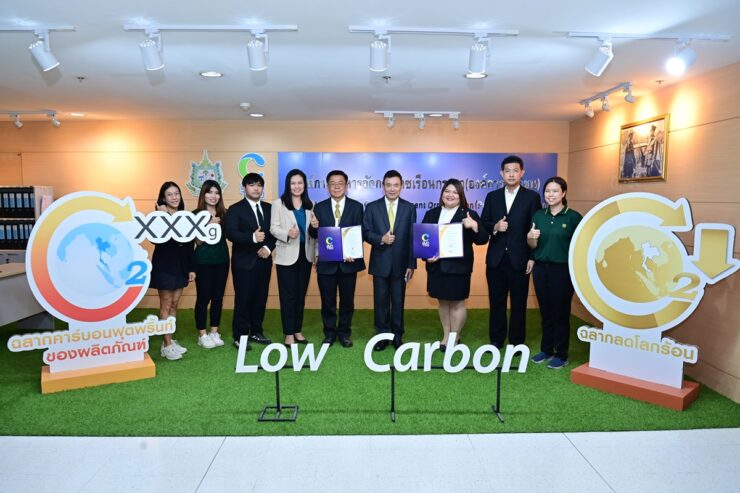
Courtesy of CP Foods
Charoen Pokphand Foods Public Company Limited (CP Foods) has been awarded carbon footprint and global warming reduction labels for 48 of its products, including the Cheeva Pork” under the U-Farm brand, Kurobuta pork, and a range of land animal feed products, by the Thailand Greenhouse Gas Management Organization (Public Organization) or TGO. The recognition highlights CP Foods’ ongoing commitment to sustainability and reducing global warming.
Since 2008, CP Foods has collected data throughout its supply chain, from feed to processed products, to develop low-carbon products. As of today, 890 of CP Foods’ products bear the carbon footprint label, and 88 products carry the carbon footprint reduction label. In this latest recognition, the swine and land animal feed product groups have been awarded 48 labels in total, comprising 27 feed products and 21 pork products.
The swine business has received carbon footprint certification for the 9th consecutive year, with products ranging from weaned piglets to slaughtered pigs, pork halves, and fresh pork cuts, including the Cheeva Pork under the U-Farm brand. Additionally, five products have been awarded the global warming reduction label. The land animal feed business has received global warming reduction certification for 27 products across seven categories, including feed for breeding pigs, fattening pigs, breeder chickens, broiler chickens, layer chickens, breeder ducks, and meat ducks.
CP Foods is intensifying its focus on environmentally friendly products, branded as “CP Foods Green Products,” as part of its commitment to reducing carbon emissions and engaging consumers in the pursuit of net-zero targets.
The Company has set a target of achieving net-zero greenhouse gas emissions by 2050. Initiatives include utilizing AI-driven Smart Feed mill automation for efficient animal feed production, promoting low-carbon feed, implementing Smart Soft Farm systems for health tracking and loss reduction in accordance with animal welfare principles, increasing the use of renewable energy like solar power and biogas, expanding green areas at production sites, developing sustainable packaging, and implementing waste management strategies to enhance resource efficiency.








